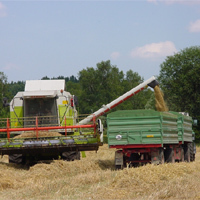
The agricultural and food industry
The agricultural and food industry has always occupied a central role in Lower Saxony: it is, after the car industry, the state's second-largest business sector. The food industry employs 80,000 people, with this number rising to 100,000 if you include small, craftsman-run enterprises. The butchering and meat-processing industry form the leading sub-sector, followed by milk processing.
It is only thanks to the state's highly productive agricultural industry that the food sector has attained this strong position. One in every two potatoes produced in Germany comes from Lower Saxony, as do half of all the poultry meat, more than a third of the eggs, a third of all the pork and some 25 % of the sugar. The food industry and agriculture are partners on an equal footing; working together, they meet consumers' needs for healthy and affordable food.
The high flexibility of Lower Saxony's food industry is also ensured by the fact that the businesses involved are, overwhelmingly, small and medium-sized enterprises. Firms from Lower Saxony have for decades now been able to hold their own within the food production market.
It is not only recently that consumers have taken a critical look at the quality of produce as well as its cost. The issues of quality management and product safety have been growing in importance since before the BSE crisis emerged. Retailers place higher demands on food producers in terms of standardization, quality and product safety. Against a background of globalization, the state has seen new quality systems developed and successfully employed. Lower Saxony-based enterprises are already getting a foothold in the markets of the new EU countries: everything points towards further expansion in the future.
Lower Saxony's agricultural and food industry will, from the political angle, be governed less on a regional and national basis and more at the EU (and even global) level. Highly competitive Lower Saxony enterprises not only satisfy consumer demands for food quality and safety, but also meet the needs of the environment, nature conservation and animal welfare. These standards will ensure the continued success of our farms and food producers into the future.




 deutsch
deutsch english
english français
français español
español nederlands
nederlands plattdüütsch
plattdüütsch русский
русский polski
polski 中文
中文 日本語
日本語